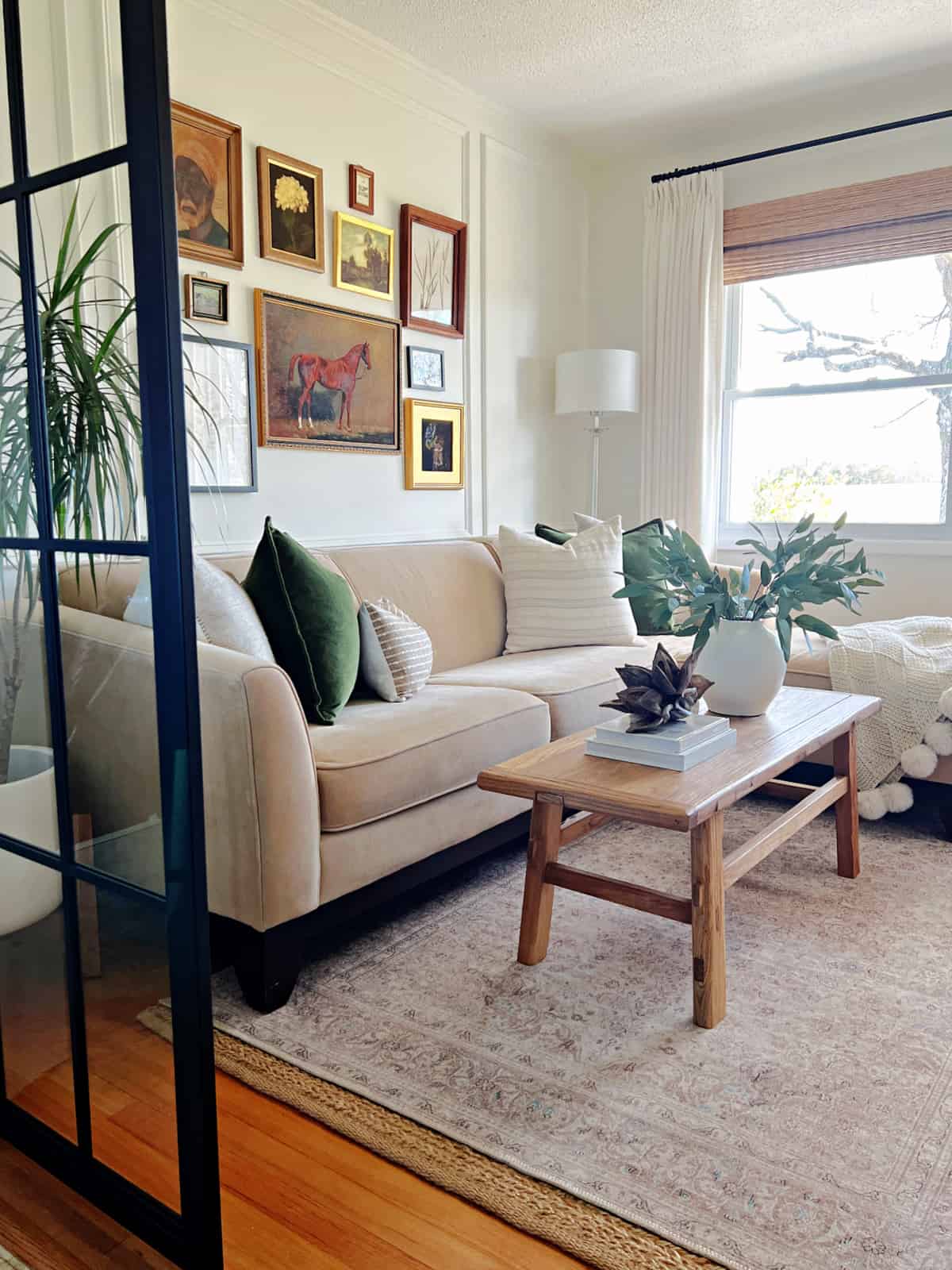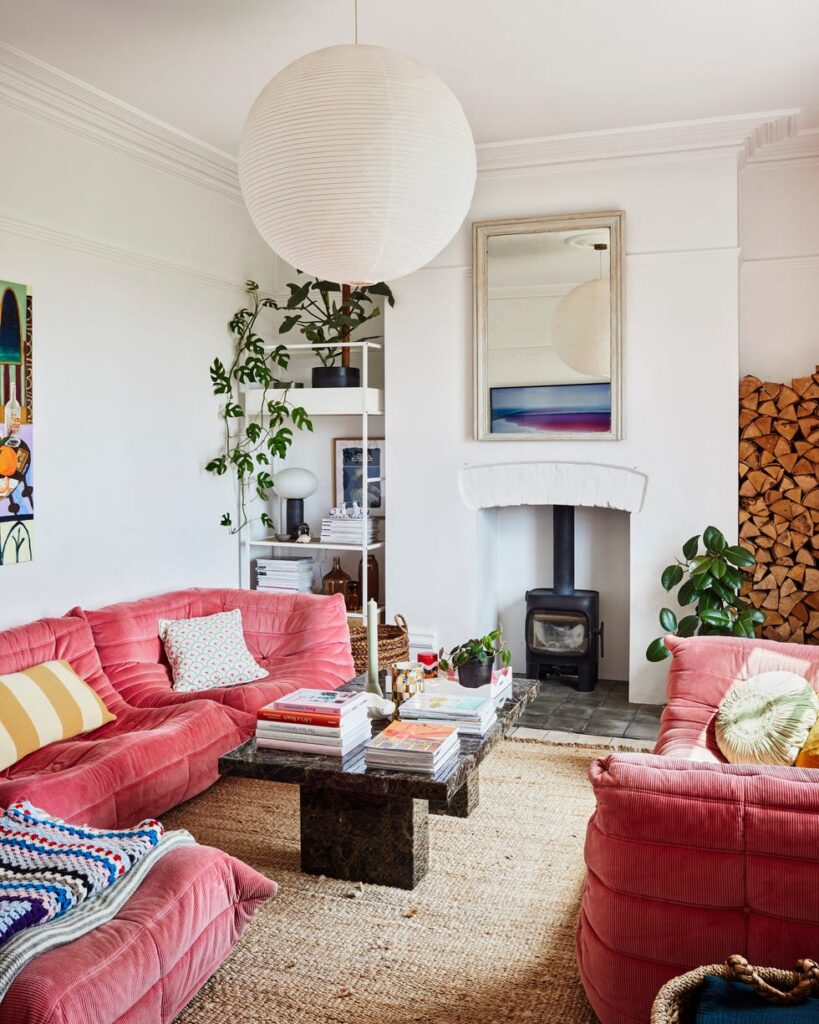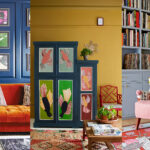Decorating a small living room can be a fun challenge. With the right approach, your space can feel cozy and stylish.
Small living rooms require smart planning. Every inch matters. Your furniture choice, color palette, and decor elements all play a role. The goal is to create a space that feels both inviting and functional. You don’t need a large room to make a big impact.
With clever ideas, your small living room can look spacious and elegant. This guide will help you transform your small living area into a beautiful haven. We’ll explore tips and tricks to maximize space without sacrificing style. Get ready to turn your small living room into a stylish retreat.

Credit: designthusiasm.com
Maximize Space
Decorating a small living room can be a challenge. The key is to make the most of the limited space you have. Maximizing space means choosing the right furniture and using smart storage solutions. Below are some tips to help you achieve this.
Multifunctional Furniture
Multifunctional furniture is essential for a small living room. Look for pieces that serve more than one purpose. For example, a sofa bed can be used for seating during the day and as a bed at night. An ottoman can provide extra seating and storage.
Here are some ideas:
- A coffee table with storage underneath
- A bookshelf that doubles as a room divider
- A TV stand with built-in drawers
Vertical Storage Solutions
Vertical storage solutions help to utilize the height of the room. This frees up floor space and makes the room feel larger. Install shelves high on the walls. Use tall bookcases.
Consider these options:
- Wall-mounted shelves for books and decor
- Hanging racks for coats and bags
- Over-the-door organizers for shoes and accessories
Incorporating these tips will help you create a more open and organized living space. Your small living room will feel bigger and more comfortable.
Choose The Right Colors
Choosing the right colors for your small living room can make a huge difference. The right shades can make your space feel larger and more inviting. Let’s dive into some color strategies that work well for small spaces.
Light And Neutral Tones
Light colors can open up a small room. Shades like white, beige, and light gray reflect light, making your space feel airy. They create a clean and calm atmosphere. Neutral tones also serve as a blank canvas. You can easily change your decor without clashing colors.
Another benefit of light colors is their versatility. They pair well with different styles. Modern, classic, or bohemian, light tones fit them all. So, start with a light base. Then, you can layer other elements over it.
Accent Colors
While neutral tones are great, a pop of color can add character. Choose one or two accent colors to make your space lively. Bright cushions, rugs, or artwork can serve this purpose. Accent colors draw the eye and create focal points.
Use these colors sparingly. You want to avoid overwhelming the room. A balanced approach works best. Small touches of bold colors can make your living room feel stylish and well-thought-out.
Optimize Lighting
Lighting plays a crucial role in making a small living room feel larger and more welcoming. By optimizing both natural and artificial light, you can create a warm and inviting atmosphere. Let’s explore how to make the most of your lighting options.
Natural Light
Natural light is the best way to brighten up any space. Here are some tips to maximize natural light in your small living room:
- Use light-colored curtains: Light colors reflect sunlight and make the room feel more open.
- Keep windows clean: Clean windows allow more sunlight to enter, brightening up the room.
- Arrange furniture wisely: Avoid placing large furniture in front of windows, as this blocks natural light.
- Use mirrors: Position mirrors opposite windows to reflect light and create the illusion of a larger space.
Artificial Light
Artificial lighting is essential for evenings and cloudy days. Here are some ways to enhance your small living room with artificial light:
- Layer your lighting: Use a combination of ambient, task, and accent lighting to create depth and warmth.
- Choose the right fixtures: Opt for slim, minimalist fixtures that don’t overwhelm the space.
- Use LED bulbs: LED bulbs are energy-efficient and provide bright, consistent light.
- Install dimmers: Dimmers allow you to adjust the lighting to suit different moods and activities.
| Lighting Type | Purpose | Example |
|---|---|---|
| Ambient Lighting | Overall illumination | Ceiling lights, chandeliers |
| Task Lighting | Focused light for tasks | Desk lamps, reading lights |
| Accent Lighting | Highlight features | Wall sconces, spotlights |
By optimizing both natural and artificial light, you can make your small living room feel brighter, larger, and more inviting. Use these tips to transform your space into a cozy and welcoming retreat.
Furniture Arrangement
Arranging furniture in a small living room can be challenging. The right layout can make a small space feel larger and more inviting. Here are some tips for arranging furniture in a compact living area.
Small Scale Pieces
Choose furniture that fits the size of your room. Large pieces can overwhelm a small space. Look for sofas and chairs with slim arms and legs. These designs take up less visual space. Avoid bulky items that crowd the room. Opt for a loveseat instead of a full-sized sofa. Use nesting tables or a small coffee table. These options provide function without taking up too much space.
Open Pathways
Ensure there are clear pathways throughout the room. Arrange furniture so that people can move around easily. Avoid blocking windows or doors. Place larger pieces against the walls to open up the center. This layout creates a sense of flow. Keep walkways clear to make the room feel more spacious. Consider floating furniture away from the walls. This trick can make the room look larger than it is.
Use Mirrors
Decorating a small living room can be a challenge. Using mirrors is an effective way to enhance the space. Mirrors can make a room feel larger and brighter. They add depth and reflect light, creating an inviting atmosphere.
Create Depth
Mirrors can create the illusion of depth in a small living room. Place a large mirror on one wall. It will make the room appear more spacious. A mirror behind a piece of furniture can make it seem like there’s more space behind it. This trick works well with sofas, consoles, or shelves.
Multiple smaller mirrors can also add depth. Arrange them in a pattern on the wall. This creates a focal point and gives the impression of a larger area. Mirrors with interesting frames can double as decorative art pieces.
Reflect Light
Mirrors can reflect light, making a small living room brighter. Place a mirror opposite a window. It will bounce natural light around the room. This makes the space feel more open and airy. Even in rooms with little natural light, mirrors can help. Position them near lamps or light fixtures to reflect artificial light.
Using mirrored furniture is another option. A mirrored coffee table or side table can reflect light and add a touch of elegance. This not only enhances brightness but also adds a stylish element to the room.

Credit: www.chatfieldcourt.com
Incorporate Textures
Incorporating textures in your small living room can create depth and interest. Textures add a tactile element that makes the space feel cozy and inviting. By mixing materials and layering fabrics, you can transform your living room into a stylish haven.
Mix Materials
Mixing materials is a great way to add texture. Combine different elements like wood, metal, and glass. A wooden coffee table paired with a metal lamp can create a striking contrast. Use glass vases or decorative bowls to add a touch of elegance. These varied materials will make your living room look dynamic and well-designed.
Layer Fabrics
Layering fabrics is another effective way to incorporate texture. Use throw blankets and cushions made of different materials. Place a knitted blanket over a leather sofa. Add velvet cushions for an extra touch of luxury. Rugs are also a great way to layer fabrics. A soft rug under a coffee table can make the space feel warm and inviting.
Experiment with different patterns and colors. A mix of patterns can bring life to a small living room. Don’t be afraid to combine stripes, florals, and solids. This variety will add depth and personality to your space.
Add Personal Touches
Adding personal touches to your small living room makes it feel cozy and inviting. The right accessories can reflect your personality and style. Let’s explore some ideas to bring your space to life.
Artwork And Photos
Art and photos add character to your living room. Choose pieces that speak to you. They can be family photos, travel memories, or your favorite paintings. Mixing different frame styles adds a modern touch.
- Use a gallery wall to display multiple items.
- Pick frames that match your room’s color scheme.
- Consider a mix of black and white and color photos.
Hanging art at eye level makes your room look balanced. Use picture ledges for a more flexible display. Rotate art and photos to keep the look fresh.
Unique Decor Items
Unique decor items give your space a one-of-a-kind feel. Add items that showcase your interests and hobbies. These can be vintage finds, handmade crafts, or travel souvenirs.
| Item | Description |
|---|---|
| Vintage clock | A timeless piece that adds charm. |
| Handmade vase | Perfect for displaying fresh flowers. |
| Travel souvenirs | Remind you of your adventures. |
Place these items on shelves, coffee tables, or mantels. Grouping similar items creates a cohesive look. Use varying heights and textures for visual interest.
Personal touches transform your small living room into a unique retreat. Experiment with different pieces until you find the perfect combination.
:strip_icc()/living-room-gallery-shelves-l-shaped-couch-ELeyNpyyqpZ8hosOG3EG1X-b5a39646574544e8a75f2961332cd89a.jpg)
Credit: www.bhg.com
Keep It Clutter-free
Decorating a small living room can be challenging. One key to success is to keep it clutter-free. A neat space feels larger and more inviting. Let’s explore some strategies to achieve this.
Regular Decluttering
Make decluttering a part of your routine. Small spaces can quickly become messy. Follow these steps to stay on top of clutter:
- Set a schedule: Allocate time weekly to sort through items.
- Use a “one in, one out” rule: For each new item, remove an old one.
- Donate or sell unused items: Avoid hoarding. Let go of things you don’t need.
Regular decluttering ensures your living room remains tidy and spacious.
Smart Storage Solutions
Maximize your space with smart storage solutions. Consider these ideas:
| Solution | Details |
|---|---|
| Multi-functional furniture | Choose pieces like ottomans with storage or sofa beds. |
| Wall-mounted shelves | Utilize vertical space. Keep the floor free. |
| Under-furniture storage | Store items in bins under your sofa or bed. |
These solutions help you keep items organized and out of sight.
Frequently Asked Questions
How Do You Maximize Space In A Small Living Room?
To maximize space, use multi-functional furniture like storage ottomans. Opt for wall-mounted shelves and keep the layout uncluttered. Light colors on walls and mirrors can create an illusion of space.
What Colors Work Best In A Small Living Room?
Light and neutral colors work best in small living rooms. They make the space feel larger and more open. Consider whites, beiges, and soft pastels.
How Can I Make A Small Living Room Cozy?
To make a small living room cozy, add soft textiles like throws and cushions. Incorporate warm lighting and personal touches like photos or plants.
What Type Of Furniture Is Best For Small Spaces?
Multi-functional and compact furniture is best for small spaces. Consider items like sofa beds, nesting tables, and foldable chairs. They save space and add functionality.
Conclusion
Creating a cozy, stylish small living room is achievable. Use multi-functional furniture to save space. Light colors can make the room feel bigger. Mirrors reflect light and add depth. Keep decorations minimal to avoid clutter. Personalize with small accents like throw pillows or a rug.
Rearrange furniture to find the best layout. Stay organized to maintain a clean look. With these tips, your small living room can be both functional and inviting. Enjoy your beautifully decorated space!

Sarah Bennett is a passionate home decor enthusiast and the creative mind behind ConsumerDecor. With a love for design and an eye for detail, she shares inspiring ideas, emerging trends, and practical tips to help readers create beautiful, functional living spaces. Sarah believes that every home deserves a touch of style, no matter the budget.





